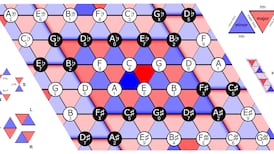Rosetta and the Philae lander are amazingly complex machines, but all of their experiments and data collection would come to nothing without a way to send it home.
Despite the 500m km distance from Earth, good communications are being achieved by fairly straightforward radio wave transmissions.
The Rosetta orbiter carries the radio equipment needed to receive orders from Earth and send back pictures and data. The digital radio signal it sends travels at the speed of light (almost 300,000km per second), but the Earth is so far away it takes a half an hour or so for it to reach home.
The Philae lander on the other hand only needs a small amount of radio equipment to reach the orbiter, just 20km away. So when it needs to send data back or receive commands from mission control, these signals are relayed via Rosetta.
Radio waves fade
The radio frequency signals used on Earth to hear music or watch television must not be garbled or mixed up - otherwise we won’t get a clean signal. Even so, a radio signal can fade and return - and we all know what it is like when a mobile phone signal breaks down.
It is even more important that data coming from the lander must be clean and reliable, with as few errors as possible. For this reason, the digital signal is manipulated and compressed using advanced mathematics.
Unpacking data
This is why when Rosetta relays a block of pictures or data from the lander, it is more likely to survive the long journey to Earth and unpack when received with as few errors as possible. Garbled data from Rosetta would be of little value to scientists anxiously awaiting Philae’s first pictures.
Deep space radio frequency communications are also different because they use more complex antennas, and receiving dishes on Earth need to be huge to capture the weak signals.
Rosetta’s radio transmitter runs at about 20 watts. By comparison, a typical mobile phone runs at about 3 watts.
Quiet space
Satellite transmissions also run at "quiet" frequencies where there is not much interference from other radio wave devices. There would be no point trying to capture data beamed from Rosetta if it was working in the frequency range used by commercial radio stations.
It is difficult to conceive just how far away Comet 67P/Churyumov-Gerasimenko and Rosetta are, but it is more than three times the distance between the Earth and the Sun.
Voyager satellites
This massive distance is nothing however compared to where the Voyager satellites currently are at the very edge of our solar system.
They also use traditional radio transmissions to send back data, but are so far away that it takes a full 10 hours for it to reach Earth and it must be gathered using huge dish-shaped antennas.
The two Voyagers were launched a month apart in the autumn of 1977. They were sent on different trajectories that delivered fly-bys of all the outer planets including Jupiter out to Neptune.
The ongoing mission was to fly right out of the solar system and into interstellar space.
As of a year ago, Voyager 1 was 18.7 billion km away or 125 times the Earth-to-Sun distance.
Voyager 2 was 15.3 billion km away, or just over 100 times the Earth-Sun distance.
Both are still in regular radio frequency contact with Earth as they venture ever further into space.










